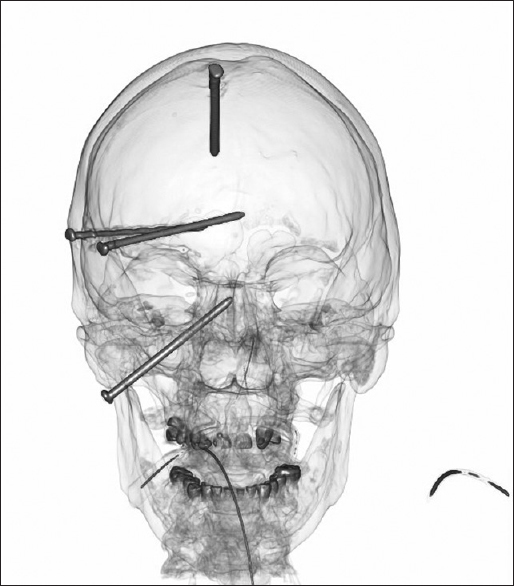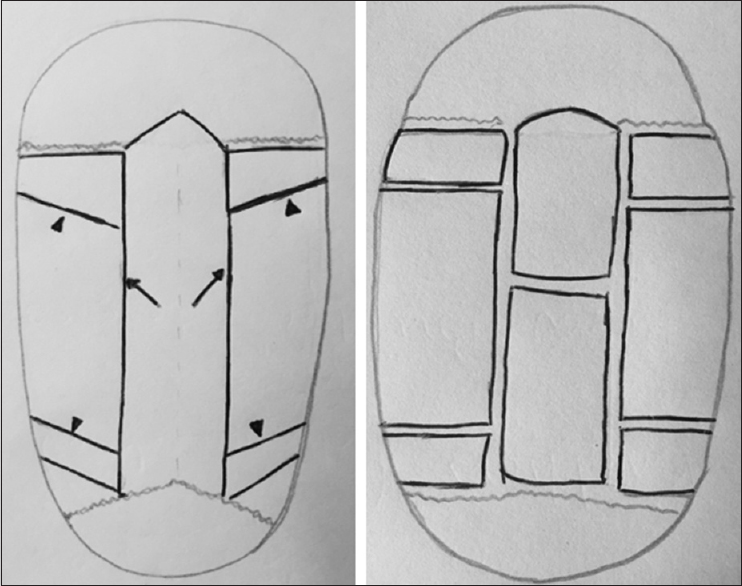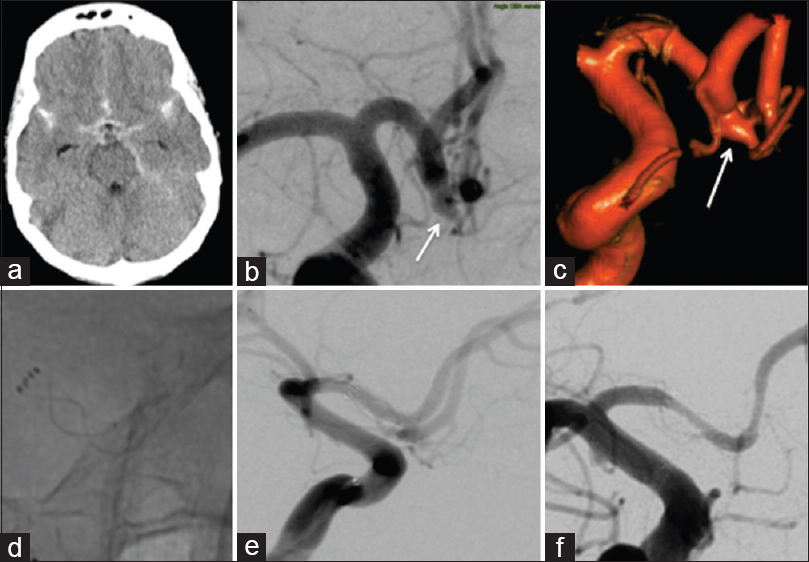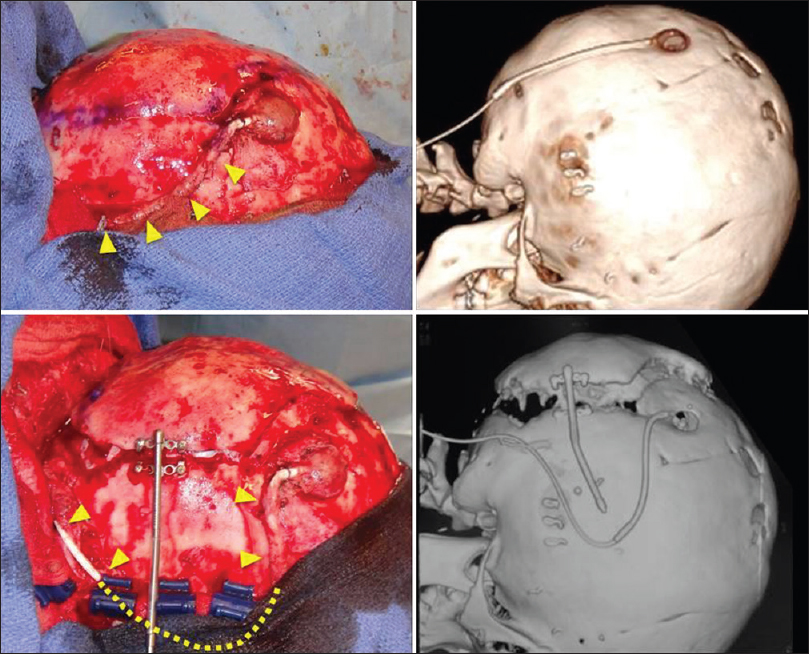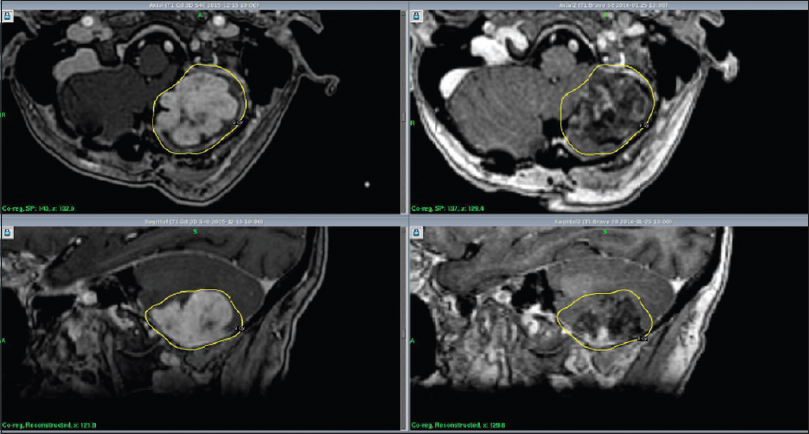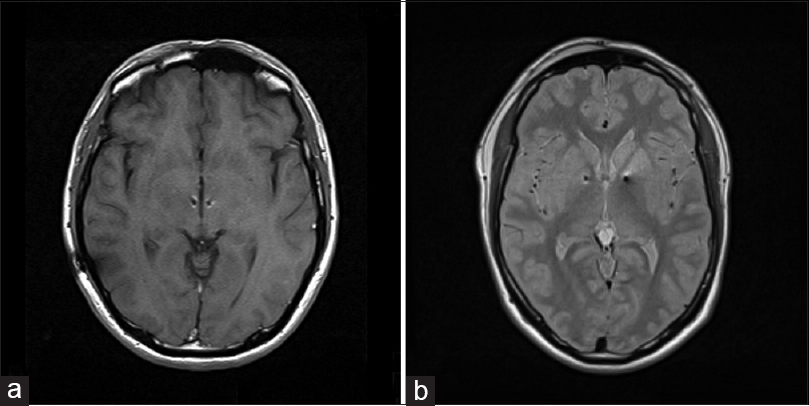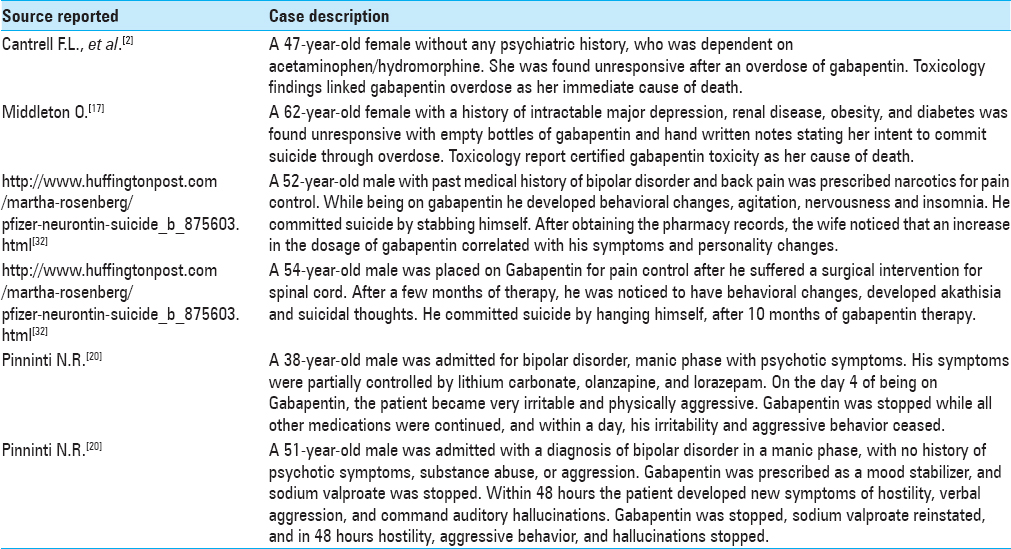Delayed diagnosis of post-traumatic aneurysm of distal anterior cerebral artery
Date of publication: 01-Nov-2018
Background:Traumatic intracranial aneurysms (TICA) are often associated with poor prognosis and should be diagnosed as soon as possible to prevent delayed intracranial hemorrhage and high rates of morbidity/mortality related to bleeding. Diagnosis requires a high index of suspicion. The goal of treatment is to exclude the aneurysm issue with surgical or endovascular methods.
A case of multiple nail gun injuries to the head and one to the heart
Date of publication: 01-Nov-2018
Background:Nail gun injuries, while uncommon, can present significant treatment challenges. Many are often caused by work-related accidents, they have also been seen in suicide attempts and assaults.
Combination of the tubular retractor and brain spatulas provides an adequate operative field in surgery for deep-seated lesions: Case series and technical note
Date of publication: 01-Nov-2018
Background:Surgeries for deep-seated lesions are challenging because making a corridor and observing the interface between lesions and normal brain tissue are difficult. The ViewSite Brain Access System, which is a clear plastic tubular retractor system, is used for resection of deep-seated lesions. However, the tapered shape of this system may result in limitation of the surgical field and cause brain injury to observe the interface between lesions and normal tissue. In this study, we evaluated the usefulness of the combination of ViewSite and brain spatulas.
Impact of extra-axial cerebrospinal fluid collection in frontal morphology after surgical treatment of scaphocephaly
Date of publication: 30-Oct-2018
Background:Infants with sagittal suture synostosis often present a pathologic dilatation of subarachnoid spaces. The impact of such subarachnoid spaces’ enlargement in the morphology of the skull, especially on the forehead and on the surgical outcome, was analyzed.
The use of flow diverters to treat small (≤5 mm) ruptured, saccular aneurysms
Date of publication: 30-Oct-2018
Background:There is limited published literature on the use of flow diverting stents (FDS) to treat ruptured intracranial aneurysms in the acute stage. We present our experience of using FDS to treat small (≤5 mm) ruptured aneurysms.
Results and limits of posterior cranial vault expansion by osteotomy and internal distractors
Date of publication: 30-Oct-2018
Background:Expanding the posterior cranial vault has become a common procedure in the treatment of complex craniosynostosis. Several techniques are available to remodel the posterior vault. Aim of this study was to analyze the posterior vault distraction osteogenesis.
The concept of rapid rescue radiosurgery in the acute management of critically located brain metastases: A retrospective short-term outcome analysis
Date of publication: 30-Oct-2018
Background:Adaptive hypofractionated gamma knife radiosurgery has been used to treat brain metastases in the eloquent regions while limiting the risk of adverse radiation effect (ARE). Ablative responses might be achieved within days to weeks with the goal to preserve the neurological function. The application of this treatment modality in selected acute/subacute settings has been termed Rapid Rescue Radiosurgery (RRR) in our department. We report the expeditious effects of RRR during treatment and 4 weeks after treatment completion.
After 19 years of deep brain stimulation in Tourette's syndrome: From multiple targets to one single target?
Date of publication: 30-Oct-2018
Gabapentin-related suicide: Myth or fact?
Date of publication: 23-Oct-2018
Background:The opioid epidemic in America is real and is estimated to be the number one cause of death in adults under 50 years of age. Finding alternative analgesic medications is part of the effort to decrease the prescription of narcotics, with gabapentin being at the top of the list.
Lumbar epidural analgesia for labor in a parturient with a history of surgery for lumbar intradural ependymoma: Literature review and case presentation
Date of publication: 23-Oct-2018
Background:Ependymomas represent 50–60% of all brain and central nervous system tumors. Previous lumbar spine surgery for resection of an ependymoma should not be considered a relative contraindication for the administration of epidural/subarachnoid anesthesia to patients in labor.



